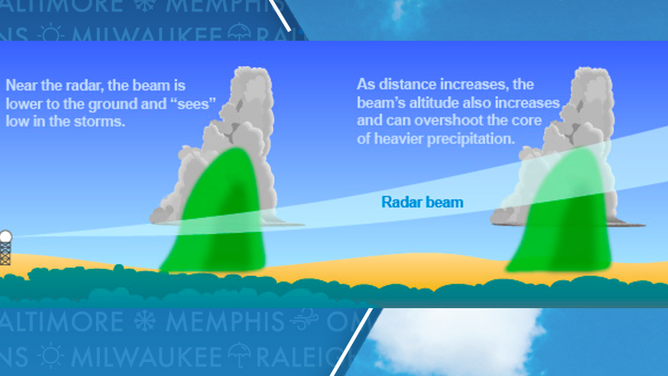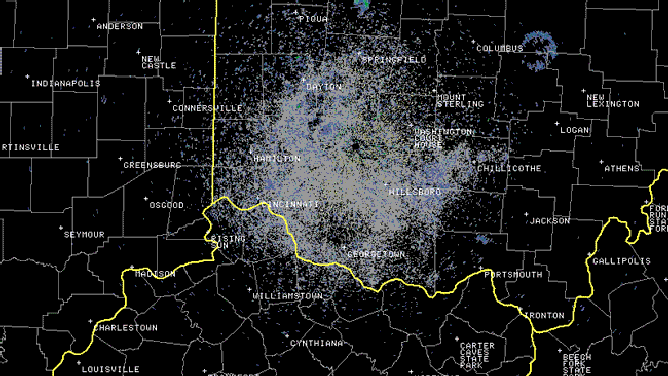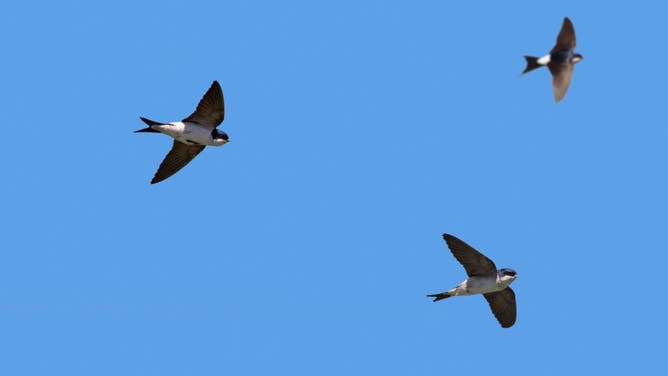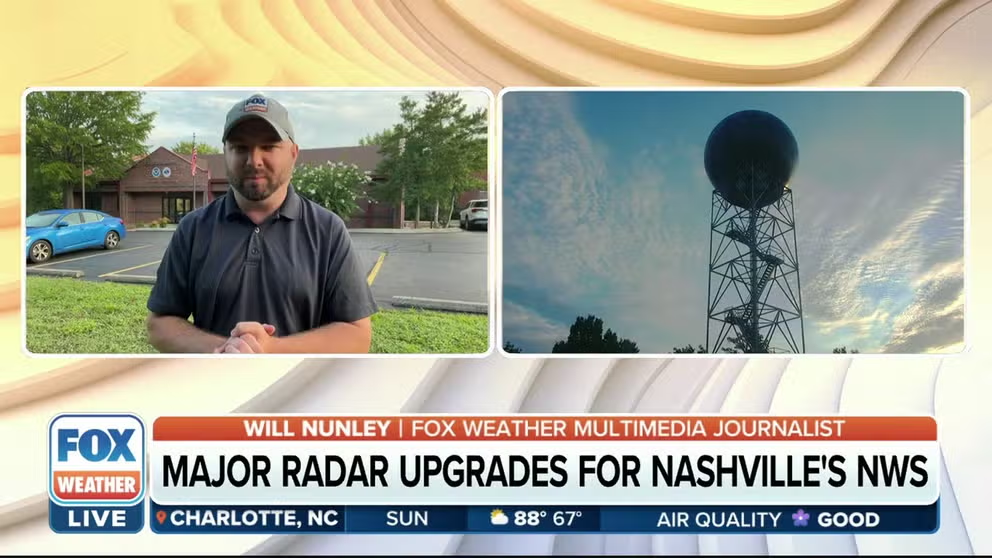How weather radar is tracking birds' migratory patterns
Due to the sensitivity of doppler radar, birds can easily be detected and show up on displays. Small birds are usually visible until they fly above or below radar beams.
National Weather Service in Nashville getting major radar update
FOX Weather multimedia journalist Will Nunley shows us the new radar installed at the National Weather Service in Nashville that will help people better prepare for and forecast weather.
Ever look at radar on a clear, sunny day and see returns that make it seem like rain is falling, even though the meteorologist promised it wouldn’t? Well, due to how sensitive radar beams are, the technology is likely picking up on a foreign matter in the sky, which in many cases are birds leaving their nests.
Researchers at Colorado State University are taking the otherwise useless data and using it as part of research for bird migrations and population estimates. They say their results have been surprising.
Studies with decades of data showed that birds are adjusting their cycles earlier, likely due to their food sources adjusting to the warming planet.

How weather radar works
(NOAA)
"Some of these roots have been occurring in the same place for many years now. Swallows and martins are facing regional and continental declines, and we don’t know why. Understanding their annual cycle might help us puzzle together what is going on with them, and we can act to prevent or stabilize their populations," Maria Belotti, an author of the studies, said in a recorded statement.
HOW TO USE THE 3D RADAR ON THE FOX WEATHER APP
Thousands of birds can be detected by radar in features that are known as roost rings. The National Weather Service said these often appear as the birds take flight around dawn to hunt insects.
In Ohio and other states around the Great Lakes, these radar depictions are common in the summer and fall before annual migrations begin.

An animation on 8/2/2010 of suspected congregation of birds in the Ohio Valley.
(National Weather Service / FOX Weather)
Due to the atmosphere's composition during the mornings, radar beams often have a downward tilt which results in more significant signals of birds than during the warmer evenings.
With the help of radar imagery, researchers found that the timing of peak bird activity is about 4.5 days earlier than it was just 20 years ago.
"Our results showed that this shift could lead to a shortened pre-migratory roosting season, which could mean that birds have less time to fuel up for the upcoming migration," said Yuting Deng, an author of both papers. "That may cascade to a lower chance of survival during fall migration or worse body condition when they reach the wintering ground."
FROM WWII TO WEATHER: HOW RADARS EVOLVED TO PROVIDE LIFE-SAVING INFORMATION
The researchers said significant changes in the birds’ patterns could have a large impact on conservation methods and the ecosystem.
"The communal roosting behavior of swallows and martins is an important part of their survival strategy. Understanding what is driving changes of this behavior throughout the years is likely to help us figure out why these species have been facing declines and what we can do to stabilize their populations," Belotti stated.

Three common house martins / northern house martins (Delichon urbicum) in flight against blue sky.
(Photo by: Sven-Erik Arndt/Arterra/Universal Images Group via Getty Images / Getty Images)
